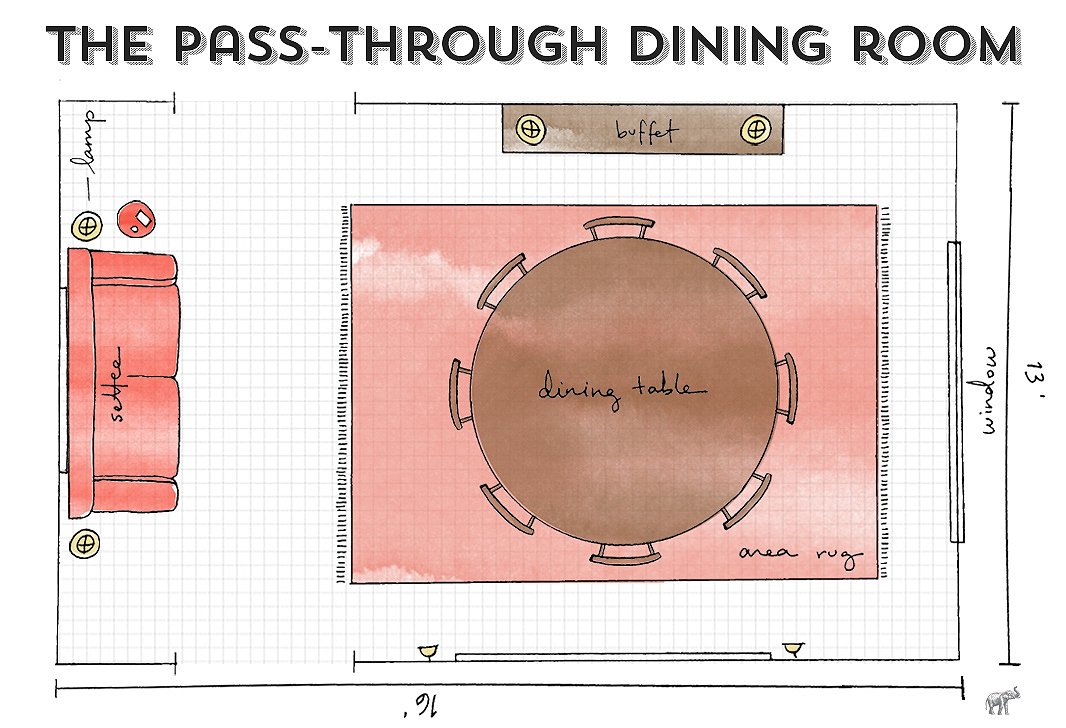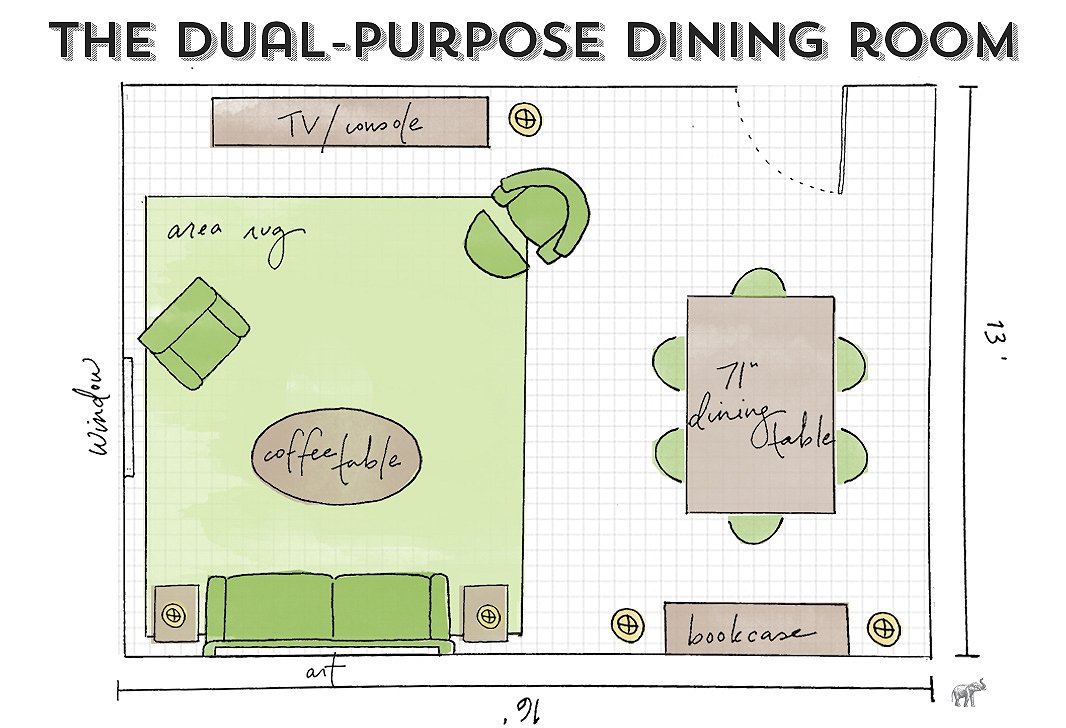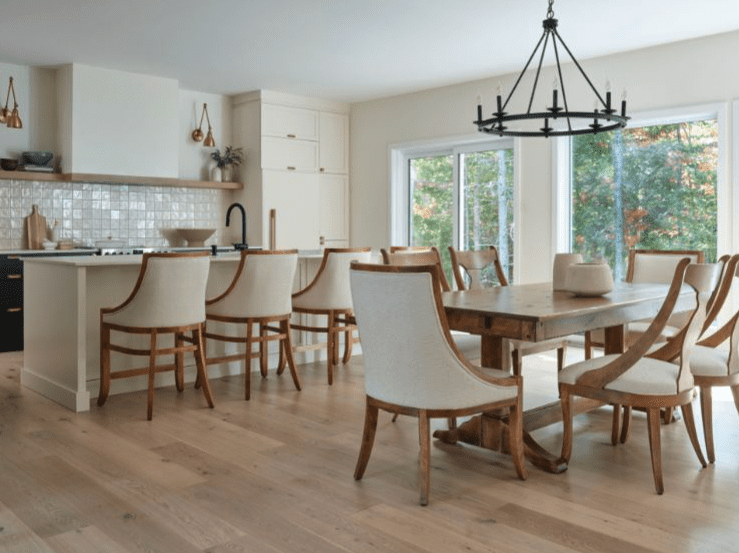No products in the cart.
Traditionally, formal dining rooms are somewhat closed-off and separate from the rest of the house to create a quiet, dignified setting. If you have a classic dining area, this is the place to put a formal dining room set.
Are Formal Dining Rooms Out of Style?
A formal dining room is a timeless area in your home, however, many people see no use for it when they already have a breakfast bar, nook, or eat-in kitchen. Trends come and go, that’s why when you’re decorating, you always consider your needs first. Do you love to entertain? Do you have a big family? Do you simply want a formal dining room? If the answers to these questions are “yes,†then go for it! However, just because you want a formal dining room, that doesn’t mean you have to stick to tradition. Design your space as casual and laidback as you want! Currently, farmhouse-style dining areas are very in-vogue with a large wooden kitchen table and chairs
Which Dining Chairs are Most Comfortable?
Comfort levels are highly subjective, however, there are a few fundamental design features that you should look for when searching for the perfect chair. Comfortable dining chairs with built-in cushions provide plenty of comfort so guests will want to stay at your table well past dessert. If you prefer a sleeker look that doesn’t sacrifice on comfort, choose fully upholstered chairs for your dining area. These chairs often look like accent chairs that can be used for a living room but the upholstery adds a modern and eclectic feel to dining spaces. If you have a counter height table, ensure that your chairs are properly measured since disparities in heights are a sure-fire way to strain your neck and back while dining.
We treat the dining room as a multipurpose space, especially in smaller homes. But even in larger apartments and houses, it doesn’t get enough airtime.
Three ways to get more out of your dining room layout.

SEATS: Up to 12 (and so comfy for dinners that go all night!)
THE LAYOUT: A trad layout that’s big on comfort and an inviting ambience. And while it may veer more formal, it doesn’t mean you can’t give your dining room some extra oomph.
THE TABLE: Sara suggests using the largest table with extendable leaves you can fit, especially if you like to entertain big crowds. When you’re not using the table for a formal occasion, you can take out the leaves to make it smaller.
THE CHAIRS: To break up that boardroom feeling, she recommends choosing different styles for the head and (smaller) side chairs.
THE EXTRAS: Sara is one for adding bookshelves so that the dining room can multitask as a study, a place to do homework, or a spot for spreading out the newspaper as you drink your coffee. “It’s pleasant to do those things among bookshelves that are well stocked.â€
LIGHTING TIP: Place lighting at multiple levels—and places other than overhead (it’s more flattering that way). Sconces approximately 52 inches from the ground between bookcases are one way to do this, or flank a server or buffet with a matching pair.

This cozied-up formal dining room is wonderful for those who have a large family or group of friends and often find themselves throwing dinner parties or hosting for the holidays.
SEATS: 8 (with a cozy spot for drinks for 2 more)
THE LAYOUT: These rooms, common in prewar buildings, feel like less of a “destination,†as their name suggests. Create a few distinct areas within to help define the room.
THE TABLE: The idea is to center a round dining table in the larger area between the pass-through and the window.
THE CHAIRS: “The trick with a round table,†says Sara, “is that the chairs can’t be placed too close to one another—the parts under the table will touch.†Consider armless chairs for more-slender silhouettes.
THE EXTRAS: Place a buffet over to the side and art or a large mirror on the opposite wall. In the smaller area, put a small sofa, “or you could swap in a settee or a bench, depending on how much space you have,†Sara says. “It’s a perch rather than a deep, sink-in sofa.†Add a couple of standing lamps and a small drinks table, and you’re good to go.
RUG TIP: Sara recommends ending the rug before the pass-through area to unify the dining area and prevent tripping. She also prefers the dining table and chairs either completely on or completely off a rug: “The space looks bigger if everything is fully on the rug.â€Â However, furniture around the perimeter of the room—sideboards and console tables—should be left completely off the rug. A 24-inch perimeter is usually perfect.Â
This setup is perfect for a luncheon, a dinner, or a party with heavy apps. The round table is excellent for conversation, and after dinner people can move over to the settee and you can pull up a game table for cards or backgammon.

This works best in a smaller, multiuse space. Having the dining table in your living room allows it to be much more informal and multipurpose. You can use the dining table as a large desk or game table while still being in the mix with people in the living room.
SEATS: 6 (or 10 thanks to lots of lounging options)
THE LAYOUT: While the other two options are meant to give additional utility to your dining room, this layout is a way to maximize your living/dining options in a space-challenged home.
THE TABLE: For a smaller space with an open dining area, Sara likes to turn the dining table into “an everyday comfort space. It’s really nice because the majority of the time you’re not using it for eating. Choose a pretty table that can be used as a desk or as a serving place for appetizers.â€
THE CHAIRS: Go with chairs that are portable and provide a good deal of versatility. That way, you can easily move them to the living room for extra seating as needed.
THE EXTRAS: In the living area, a sofa with end tables makes a cozy place from which to watch the TV placed on a console across the room. A club chair and a coffee table create a conversation area. A second club chair and an ottoman, placed between the console and the door, provide a great place to read or nap. It’s all about flexibility and lots of seating options.
SOFA TIP:Â Look for a midsize sofa (about 72 inches wide), which is a good jumping-off point for small spaces.



